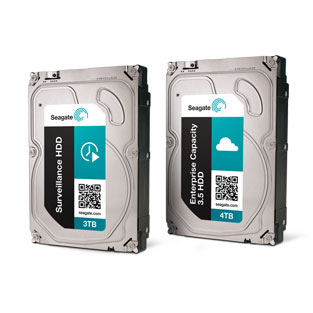
Savvy security professionals are migrating to digital video solutions in droves and with good reason: surveillance digital video recorders (SDVR) boast an unprecedented combination of video quality, storage capacity, and flexibility, enabling SDVR-based systems to deliver an impressive range of enhanced capabilities: Higher image resolution; More active cameras; Longer archival periods; and Intelligent video recognition.
Abundant storage capacity is a fundamental enabler of such capabilities and it is here that some video surveillance deployments can go amiss. In an effort to minimize costs, some SDVR systems may utilize multiple low-cost, low-capacity hard disk drives (HDDs) to meet their storage requirements. On its surface, this approach appears to be a viable option to reduce storage expenditures.
But initial purchase price is only one part of total cost of ownership, and in other respects this budget-drive approach actually inflates SDVR system costs. Specifically, deploying a plethora of inexpensive desktop-class drives consumes more drive slots, requires more power (while producing more unwanted heat) and significantly reduces system reliability.
In many SDVRs there are only a limited number of drive slots available, and budget drives lack sufficient capacity for more and/or higher-quality video streams or longer retention of video data.
The solution?
Scale up capacity with a smaller number of large (1TB, 2TB or 3TB) HDDs, purpose-built for surveillance storage duty. The benefits of this approach are both significant and multifold: Compact, more space-efficient SDVR systems can meet the elevated capacity needs of sophisticated surveillance environments, power consumption and failure-inducing heat are both reduced, and cutting the number of drives ensures fewer potential points of failure and thus higher reliability.[…]

